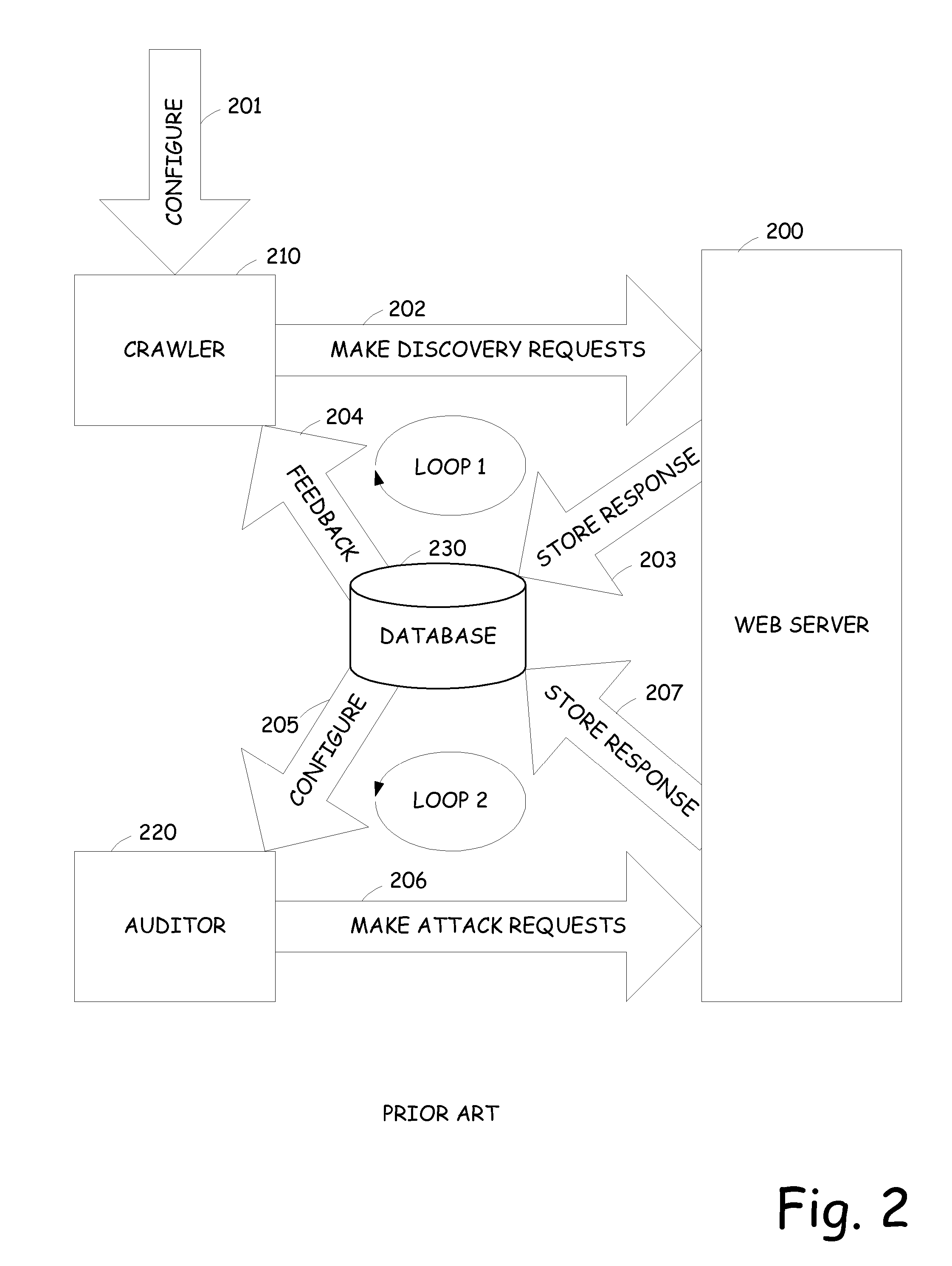Integrated crawling and auditing of web applications and web content
a crawling and auditing technology, applied in the field of web server vulnerability assessments, can solve the problems of increasing the physical size of the memory device is shrinking, and the electronic products available for use are constantly shrinking in size, so as to achieve the effect of reducing the processing power allocated to the crawling process and reducing the processing power of the audit process
- Summary
- Abstract
- Description
- Claims
- Application Information
AI Technical Summary
Benefits of technology
Problems solved by technology
Method used
Image
Examples
Embodiment Construction
[0031] The present invention is directed towards an integrated crawl and audit vulnerability assessment that advantageously provides vulnerability feedback early in the process even while the crawling process is being executed. In general, the present invention operates by integrating the crawling process and the auditing process in such a manner that they can run simultaneously. Using technology, such as multi-threading, the auditing process can run simultaneous or concurrently with the crawling process and provide vulnerability assessment feedback early during the process. Advantageously, this aspect of the present invention can enable a vulnerability assessment to be terminated early in the process if a severe vulnerability is detected. This allows the vulnerability to be fixed and then reinitiating of the vulnerability assessment without having to spend the vast amount of time to complete the entire crawl, only to discover that a severe vulnerability is present that must be fixe...
PUM
 Login to View More
Login to View More Abstract
Description
Claims
Application Information
 Login to View More
Login to View More - R&D
- Intellectual Property
- Life Sciences
- Materials
- Tech Scout
- Unparalleled Data Quality
- Higher Quality Content
- 60% Fewer Hallucinations
Browse by: Latest US Patents, China's latest patents, Technical Efficacy Thesaurus, Application Domain, Technology Topic, Popular Technical Reports.
© 2025 PatSnap. All rights reserved.Legal|Privacy policy|Modern Slavery Act Transparency Statement|Sitemap|About US| Contact US: help@patsnap.com



